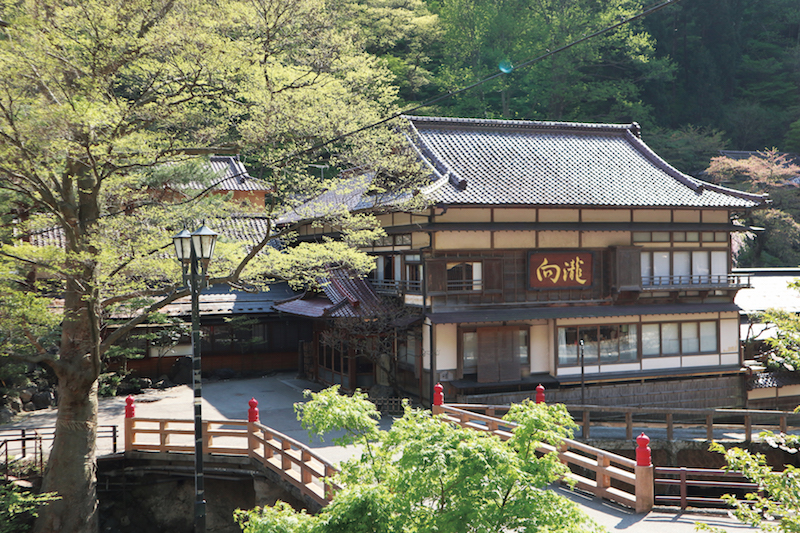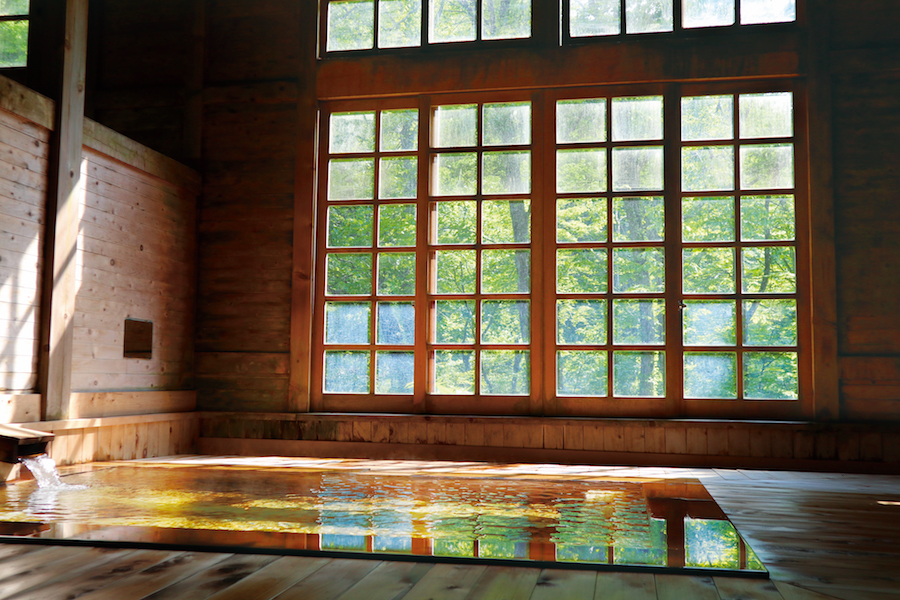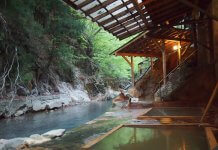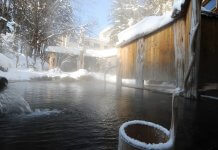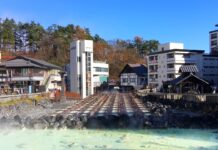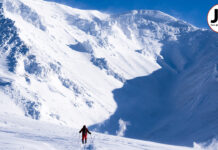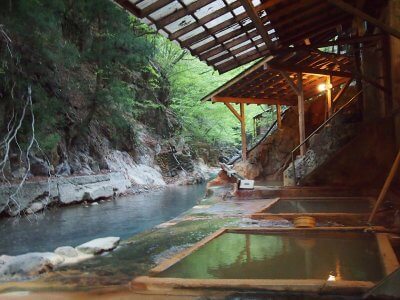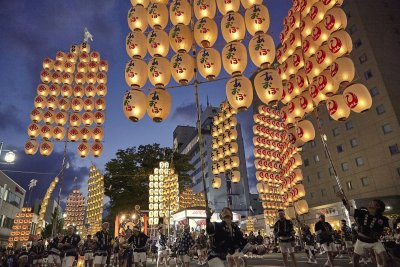Hi, my name is Rie Nishimura. I’m a freelance writer who’s written about hot springs for over 20 years. I hope my writing helps others discover the charming qualities of hot springs as I have.
What are hot springs?
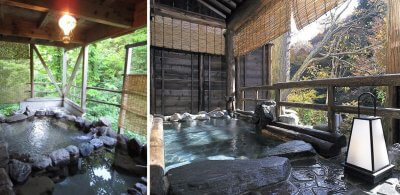
What makes a hot spring, a Japanese hot spring? According to Japan’s Hot Spring Law, a hot spring is defined as hot water welling up from the earth at 25℃ or higher, contains 1g or more of dissolved minerals per kilogram, or has above certain amounts of at least one of 18 different minerals (e.g., iron or sulfur). When people hear the word “hot spring,” most probably think of warm water, but under the definitions listed in the Hot Spring Law, just because the water is warm doesn’t automatically make it a hot spring. Legally, if the water is 25℃ or higher, it’s a hot spring. If the water is under 25℃ but has a specified amount of minerals, it’s also considered a hot spring. Actually, there are many hot springs in the world that are cold.
Can a Japanese Hot Spring Be Cold?
Most places with cold hot springs pour the water into heated tubs, but at some places, both the water and the tubs are cold. You can find those kinds of cold hot springs in Oita prefecture’s Kan-no-Jigoku (Cold Hell) Hot Springs. When you dip into the 13℃ hydrogen sulfide hot spring, the cold temperature will cause your body to shiver. After you finish soaking, you warm yourself in a room heated by a stove. This way of enjoying cold hot springs has been around for many years.
It’s like a form of training, but people who visit cold hot springs say bathing that way is good for the body. There are even places where you can take turns soaking in cold and hot baths. Expanding and contracting the capillary blood vessels is good for your blood circulation. After being in the baths, your body easily becomes nice and warm. This is a popular way of bathing for people who often feel cold easily because of poor circulation.
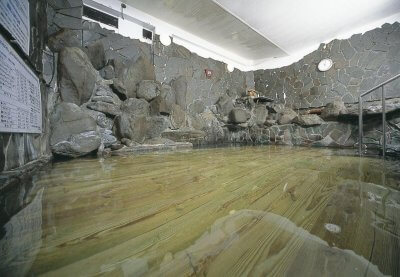
Can a Japanese Hot Spring Be Warm?
There are 32℃ moderately warm baths, like Niigata prefecture’s Koma-no-Yu Hot Spring and Yamanashi prefecture’s Shimobe Hot Spring. These baths are called yozume-no-yu (all-night baths) because the water’s temperature is so comfortable that people with burns will soak in them through the night. Whether you visit a hot spring with cold, mildly warm, or hot baths, there are different ways of bathing in each of them.
What Makes Japanese Hot Spring Water Special?
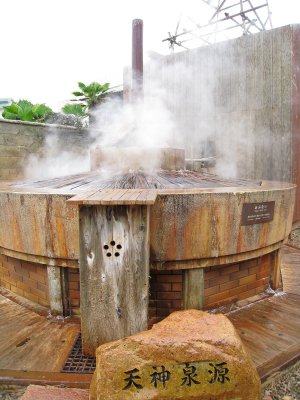
There may be some people who think that a hot spring is thick, cloudy water rich in minerals. However if the water’s temperature is 25℃ or higher, no matter how thin or clear the water might be, it still can be called a hot spring. But to say that thick, cloudy hot springs are good and thin, clear hot springs are not, would be incorrect. Akita prefecture’s Yu-no-Sawa Hot Spring only has 153mg of minerals per kilogram of water. That’s 1/400 the amount of the minerals in Tenjin Gensen hot spring located in Kobe’s Arima Onsen, which is said to be the thickest, mineral-rich hot spring in Japan. And yet, even though Yu-no-Sawa Hot Spring may be far in the mountains, it has a good share of return visitors. Many claim the water is good for children’s skin and that drinking it works wonders for your stomach. The water is also crystal clear. It’s said that if you dropped a needle in it, you’d spot it easily. These qualities have made Yu-no-Sawa Hot Spring extremely popular among the locals.
The long journey of hot spring water
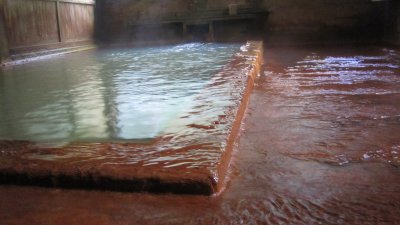
These days, people have been saying a lot of different things about hots springs. For example, “kakenagashi, or free-flowing, hot springs are good” and “diluted hot springs are bad.” However, deciding the quality of a hot spring isn’t that simple. Hot spring water gets heavily cycled between the sky, ground, and areas deep in the earth over time. Rain from the sky makes its way through the soil and continues farther, deep underground, where it’s heated by magma. While the water is traveling through the earth, minerals dissolve into it, and it mixes with ground and seawater until it finally emerges through cracks on the earth’s surface as a hot spring. When you think of hot spring water this way, you can no longer say adding water to hot springs is bad or cycling the water makes it any less authentic.
How Many Hot Springs Does Japan Have?
Japan has 3,185 hot spring resorts. If you look at statistics from the Japanese Ministry of the Environment, Japan has 3,185 hot spring resorts. There’s a total of 27,671 hot spring fountains pushing up 2,680,000L of hot spring water every minute. Each hot spring fountain produces different types of water. In addition, even if the source is the same, the water can change depending on the weather and season. Because of their ever-changing nature, you could say that when you go to a hot spring, the day you bathe is a once-in-a-lifetime experience. Hot springs are nature’s gift, bestowed upon us after its long journey from the heavens and up through the belly of mother earth.
The day you bathe is a once-in-a-lifetime experience
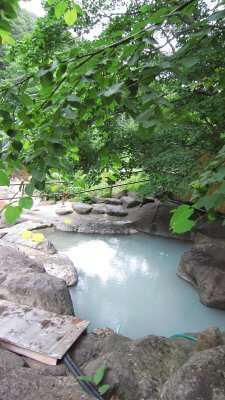
Hot springs change like living creatures. In the evening, it can be crystal clear, then come morning, it can be milky-white. There are hot springs where the amount of water they produce rises with the rainfall. For some, the smell of sulfur will grow stronger or weaker, depending on the day. There are also hot spring resorts where if the water in nearby rivers increases, their hot spring waters flow more freely.
A Guide to Hot Spring Bathing in Japan
- Drink water: Drink a glass of water before bathing. When you take a bath, you’ll sweat, and your blood viscosity (the thickness or stickiness of your blood) will increase, so it’s good to be hydrated.
- Kakeyu: Before getting in the bath, do kakeyu. Start by pouring hot bathwater over your legs (because they are the farthest from your core) and gradually make your way up to your chest.
- Hanshinyoku: Now, it’s time to enter the bath. Begin with hanshinyoku. Get into the tub so that the water reaches the area right under your chest. This will warm the core of your body and keep it from cooling quickly once you’ve left the tub. In Japanese, when the body cools after leaving the bathwater is called yuzame.
- Zenshinyoku: After letting your body get used to the water by doing hanshinyoku, it’s time to for zenshinyoku. Submerge your body into the bathwater up to your shoulders. The right amount of bathing time depends on individual preference and the bathwater’s temperature, but it’s unhealthy to soak for too long.
- Agariyu: Finally, you do agariyu, but this step is often skipped at hot springs. Agariyu is rinsing your body with warm water after getting out of the bath. Usually, the temperature of the water is comfortable for anyone. Depending on the hot spring facility, though, the type of water used for agariyu can vary. Some places use the hot spring water, while others use boiling tap or well water. When you do agariyu, you rinse away the minerals from the hot spring water. If you have sensitive skin or have been soaking in a strong sulfur spring, it’s good to rinse off the hot spring minerals with warm water.
- Drink water: Drink liquids like water or tea to rehydrate after bathing. Sorry, beer lovers, but beer doesn’t count.
- Rest: Rest and relax.
I’ve introduced the five hot spring bathing terms kakeyu, hanshinyoku, zenshinyoku, yuzame, and agariyu. If you become familiar with these terms, you’ll master hot spring bathing in no time. I hope you’ll enjoy the soothing and healthy qualities of bathing in hot springs.
Useful Hot Spring Bathing Terms
掛け湯/kakeyu: Pouring hot bathwater over your body outside of the tub. This will cleanse your body and gradually get it used to the bathwater’s temperature.
半身浴/hanshinyoku: Submerging your body in the bathwater up to your chest.
全身浴/zenshinyoku: Submerging your body in the bathwater up to your shoulders.
湯冷め/yuzame: Japanese people think it’s easy to catch a cold if your body cools off after bathing. It’s said that hot spring water keeps the body warm longer than ordinary hot water.
上がり湯/agariyu: Pouring hot bathwater over your body one final time after leaving the bathtub.
 Writer: Rie Nishimura
Writer: Rie Nishimura
Hi, my name is Rie Nishimura. I’m a freelance writer who’s written about hot springs for over 20 years. I hope my writing helps others discover the charming qualities of hot springs as I have.
 0
0

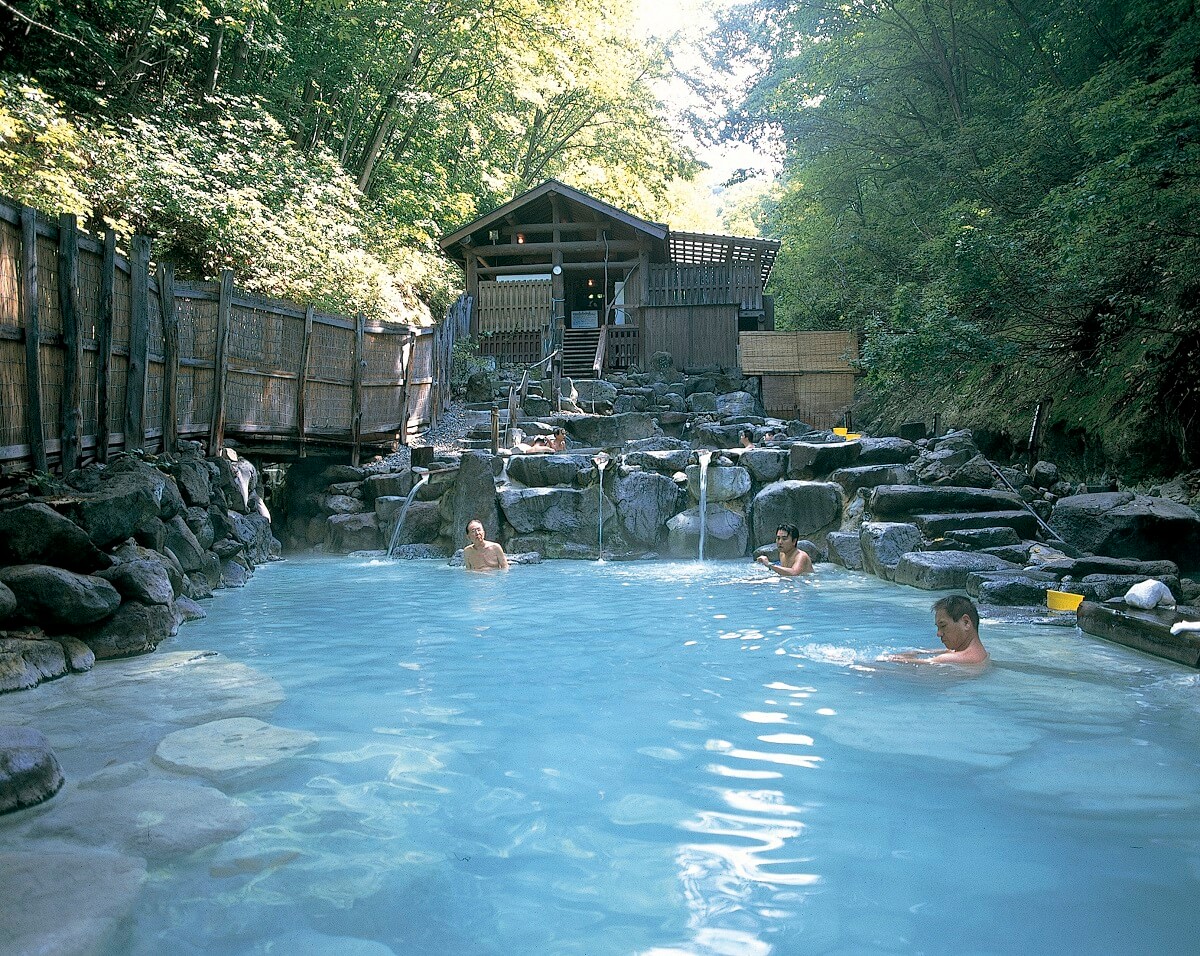
 Writer: Rie Nishimura
Writer: Rie Nishimura